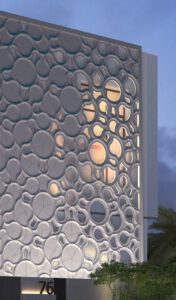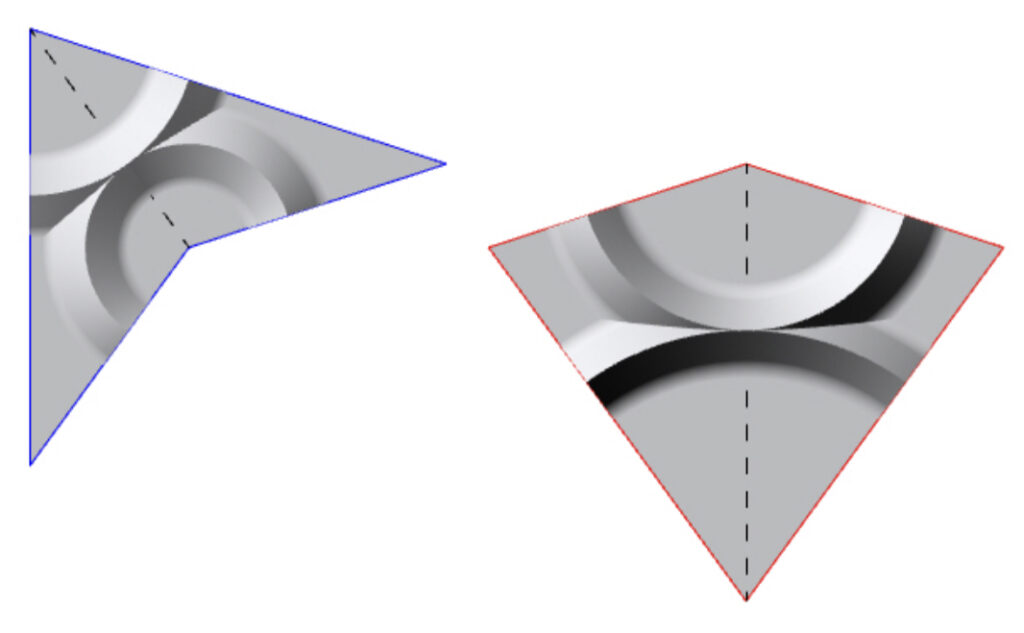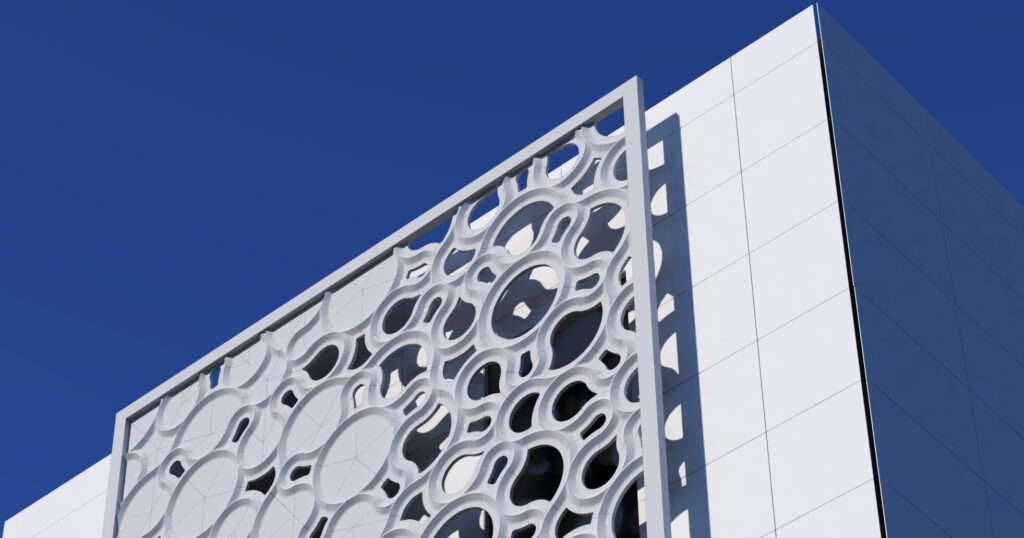
Sometimes, the third skin is not enough. In this particular location, a private villa in an Arabian desert town, the owners needed an extra layer in front of their façade.
The house follows a minimalist design language, forming interesting spaces through the composition of cubic building parts. The screen is set to complement the strong elements of the house with flowing shapes and smooth transitions between opaque and transparent areas.
Like many design exercises, this one startet with the manufacturer. The screen elements are made from fibre-reinforced UHPC – a fine-grained concrete-mixture with high fidelity in the replication of the detail in the molds it is cast from. Since shaping and preparing the casting templates is the most laborious part of the production, minimizing their size and number is key to economically produce large areas.
The pattern applied here has an underlying structure with very peculiar properties – it is non-periodic, thereby forming arrangements that do not repeat as the pattern progresses. The use of such geometry has a long tradition in islamic patterns, while relatively recent findings of their underlying mathematics spurred modern scientific interest. The applied concept of Penrose-tiling allows the generation of complex patterns using a very limited number of tiles.

Based on these methods this screen is produced and composed from only two different pieces, each of which in a solid and a perforated version.

ps. If you’re in for a psychedelic experience, look at these diffraction patterns of quasicrystals. That’s where this geometry emerges from nature.

